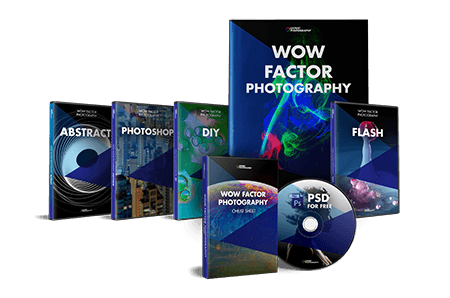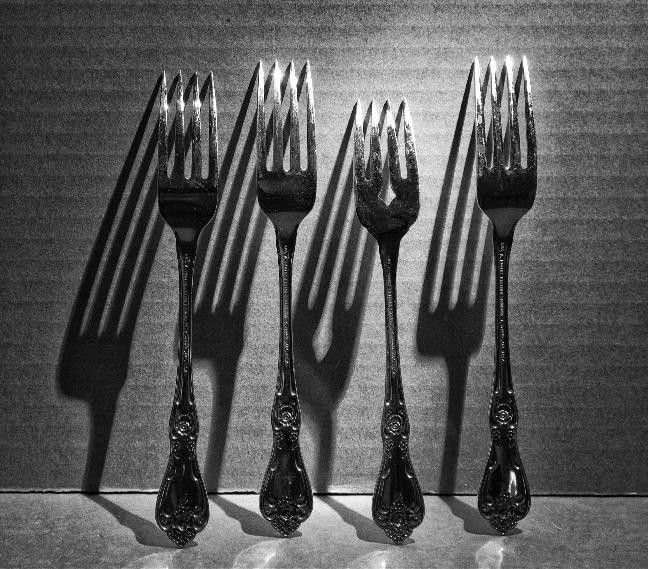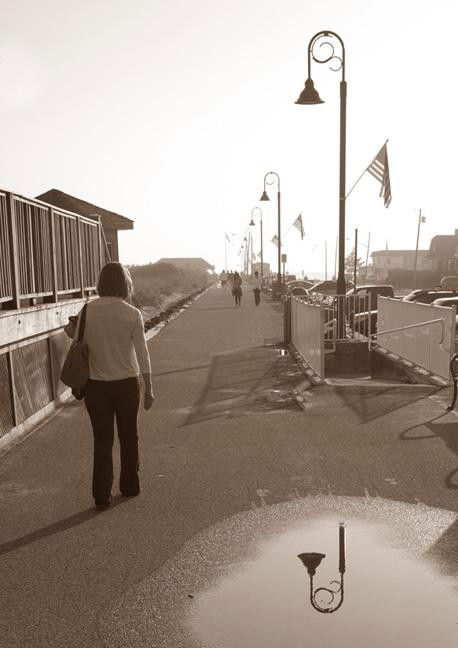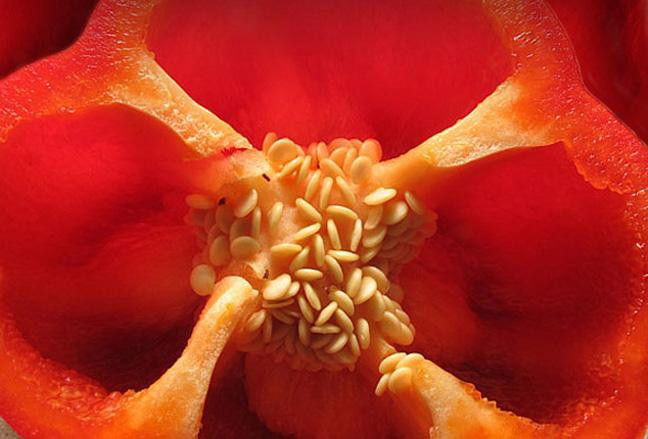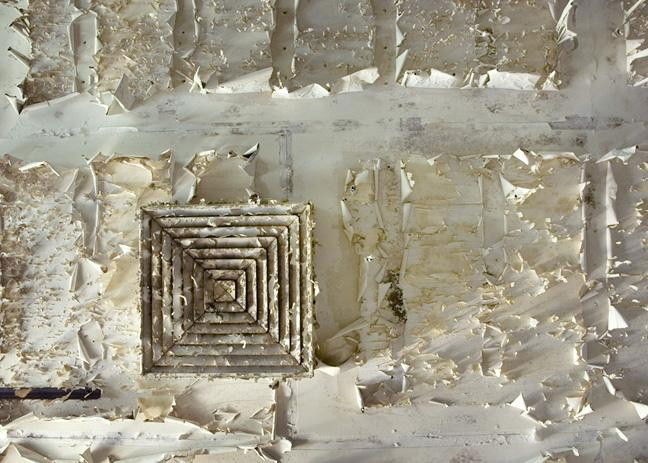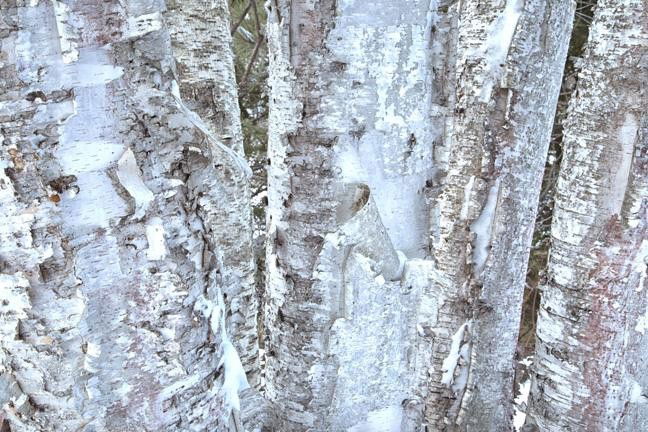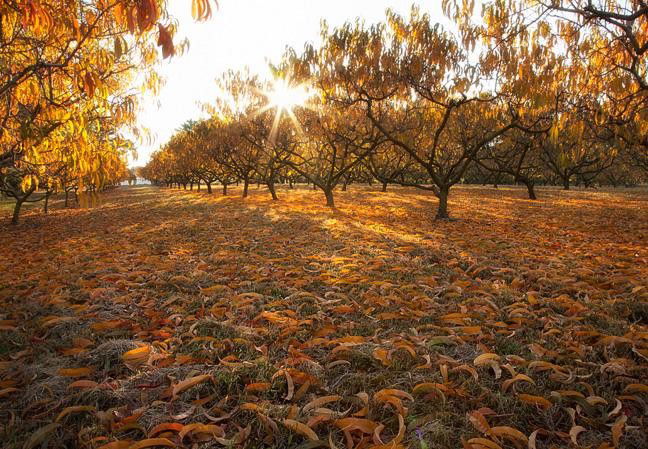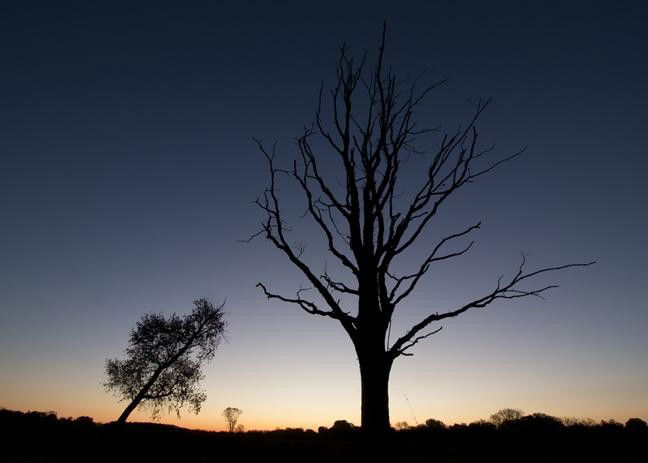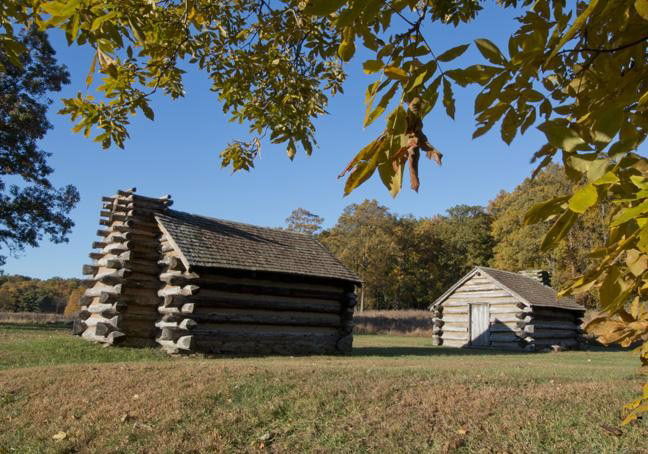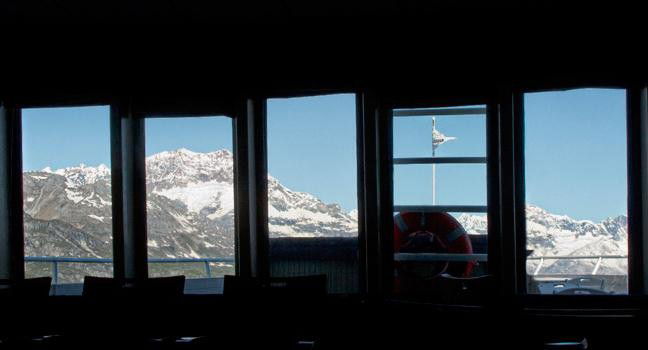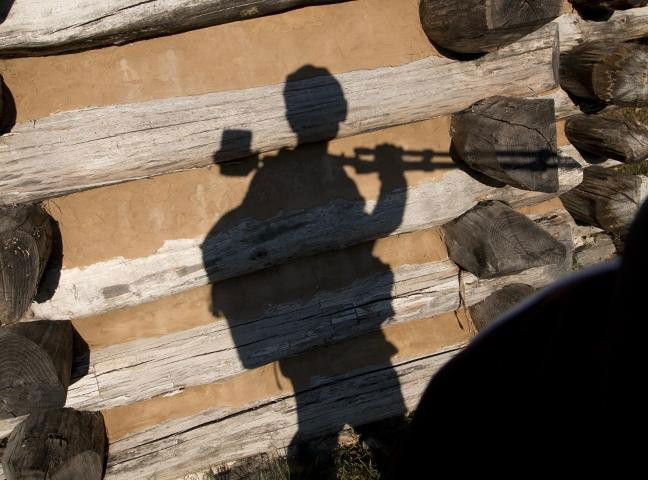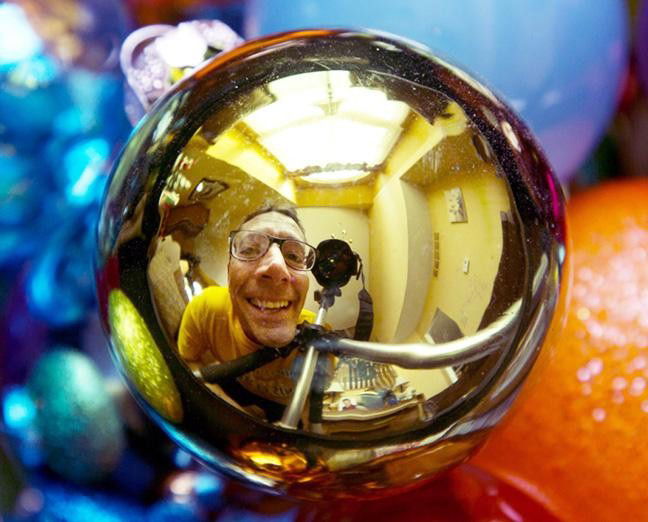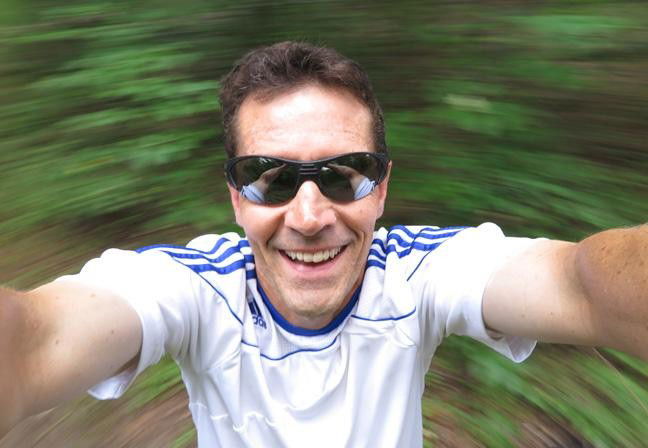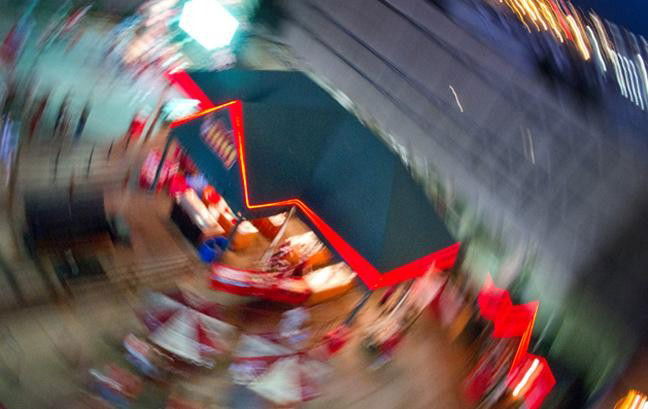[ExpertPhotography is supported by readers. Product links on ExpertPhotography are referral links. If you use one of these and buy something, we make a little bit of money. Need more info? See how it all works here.]
7. Photography Projects to Look for Reflections and Shadows
You can treat these two subjects as separate themes to have fun with, but I put them together because they both involve photography where the main subject may not be the center of interest. You can photograph the shadows that the sun naturally makes or use an artificial light like a flashlight and create your own. In the photograph of the forks I set up two pieces of scrap cardboard in my dark basement and moved a small flashlight around until I liked the effect. My camera was mounted on a tripod and I used the self timer function to give me enough time to get the shadows just right. For outside shadow pictures, you’ll get longer shadows from the sun earlier and later in the day. A simple UN-cluttered background usually works best and makes interesting shapes from the shadows more prominent. You can find reflections everywhere. Smooth, shiny surfaces work best. Glass surfaces, shiny metal, and water are popular surfaces to have fun with this one. Small puddles are great to use to isolate parts of outdoor objects. You can use mirrored sunglasses, shiny objects like your kitchen toaster, automobiles, or even silverware to get some great effects.
6. Take Your Camera Closer
Close-ups and true macro photographs often reveal a world that we would ordinarily ignore. The vast majority of macro photos are taken of flowers and insects. The variety of species and locations that you can find makes these photography projects easy to delve into. If you want to challenge you and your child’s creativity, try looking for other macro subjects. You can find some very interesting subject matter right in your own kitchen. This red pepper has some interesting patterns revealed when it is sliced open. I achieved nice soft, directional light by aiming a strobe light at a white piece of paper above the pepper during the exposure. If you want to stay out of the kitchen, try another location like the office, the garage, or yes, even the bathroom! Can you guess the identity of the following photo? It’s a close-up photo of the suction cups on a bathroom shampoo bottle holder. I sprayed it with water first to get the interesting patterns.
5. Experiment with Different Textures
One of the best ways to improve your visual recognition skills is to focus on just one element of photography, whether that’s color, contrast, shape, or texture. Perhaps not as exciting to many, photos of textures are often very simple in nature and often don’t get much fanfare. Still, the point of these photography projects is to exercise the ability to recognize the different qualities that an image can have so that it can be captured in an image. Finding textures will challenge you and your child to look at different kinds of surfaces and look for the complex patterns that can be found on the material you’re looking at. Shooting textures might be best for you if you like to find some detail that the casual observer may not notice. The photo below is the ceiling of an abandoned factory, taken less than a year after it was ravaged by a fire. Finding this texture required one to look up and notice how the light coming in from the windows on one wall brought out the rough shapes of the singed materials above. Textures are often shot with more of a limited view in mind, sometimes with longer lenses or closer distances to eliminate distracting elements. Having a focal point or center of interest makes for a much stronger image. Shooting textures in black and white can be good practice as well, since the absence of color calls greater attention to textures and forms. Textures are everywhere, and usually, when light comes in from an angle, the texture is most visible and enhanced the most. Buildings, walls, and other man-made flat surfaces are often used as subject matter for texture photos. There is also an abundance of texture subjects in nature, too.
4. Shoot in Different Natural Light Conditions
Photography starts with lighting and any list of photography projects has to have at least one jaunt into lighting. For this study, look for situations where the sun is partially or fully obscured by something. Direct sun hitting the lens may be a bit too harsh and tricky to deal with exposure and flare. The slightest movement of your camera or the sun can make a big difference in the final photograph. The peach orchard was photographed early in the day on a crisp Fall morning. I positioned the camera so that only a portion of the sun made it through. Another way to experiment with light is to look for a situation where the sun is completely blocked by your subject. In the case of the photo of the leafless tree, the sun was below the horizon. You can get interesting results with silhouettes where all of the light is coming from behind your subject and there is little or no light hitting your subject on the side that is viewable from the perspective of the camera. You can shoot before sunrise or after sunset and the sky will become the entire background behind your silhouetted subject. Open spaces where light will not reflect back toward your subject will give you the silhouette look.
3. Find Frames in Your Environment
Framing is a way of drawing attention to the subject of your image by blocking other parts of the image with something in the scene. It’s good to know some of the standard rules of composition even if you don’t want to blindly follow them all of the time. Framing your subject within your photos is a composition technique that gives you photo a sense of depth and leads your eye toward the main subject. In the photo of the cabin within Valley Forge Park in Pennsylvania, I composed the photo to include the tree branches to frame in and add emphasis to the cabin. This approach is very commonly used in landscape photography and portraits. You can also get creative with framing and use man-made openings to frame in your photos. During a photo excursion to Alaska I saw this opportunity to use the windows inside of our small cruise ship to frame in the Southeast Alaskan mountains. Try including a doorway, an arch, an opening in vegetation or other structure that frames in your main subject. You can make it like a scavenger hunt, searching for different angles and perspectives to use.
2. Take Unconventional Selfies
The informal self-portrait (or “selfie”, as it’s lovingly known) has become so commonplace that it’s a good idea for you and your photography student to have some fun with this topic. There are a number of photography projects you can come up with around this idea. Here’s one suggestion: rather than shoot the typical teen selfie in the bathroom mirror, try limiting your selfies to shooting your own shadow. Yes, in the first example of a selfie we’re back to a shadow photo, but this time it’s the shape of your shadow we’re focusing on. In the shadow selfie photo below, I was strolling around with my camera and tripod draped across my shoulder. I wanted to make the photo look as if I was walking by this cabin and not just standing and looking. I set the camera on self-timer so that only my one arm would be shown holding onto the tripod. The second creative selfie example uses your reflection as the main subject. Curved surfaces or surfaces that only reveal a part of your face can give you the most interesting results. This is a photo of an ordinary Christmas ornament with the tripod, camera and distorted face included in the photo. Your results will change quite a bit depending on whether you use a wide angle or telephoto lens setting.
1. Experiment with Creating Motion Blur
Of these photography projects, this one might appeal most to kids who enjoy expressing themselves by moving around. You may have to shoot quite a few variations of intentionally blurred photos to get one that appeals to you, but that’s a big part of the fun of it. Each version you try is unique, so experimenting is part of the game. Taking a photo like this first one may you feel dizzy, so it’s not for the faint of heart. You can have part of the photo remain sharp and part of it go blurry. The tricky part is to get your spin and the shutter speed set at just the right speed. This blurry spin in the woods had an exposure time of ⅛ second. Other ways to create intentional blur include zooming your lens and rotating your camera during exposure. In the photo of the blurry building, I rotated the camera as I took the photo. It was taken from a balcony overlooking a picnic area at a sports stadium.
Final Tips on Doing Photography Projects with Your Child
- Keep a childlike curiosity with each topic you explore. 2. Critique your photos and your child’s with a positive, supportive attitude. 3. Get interesting ideas for new photos by searching for keywords on photo gallery sites like Flickr, 500px, and Pinterest. Interested in finding some more great photography project ideas? Check our article on photo essay ideas for more photography inspiration!
